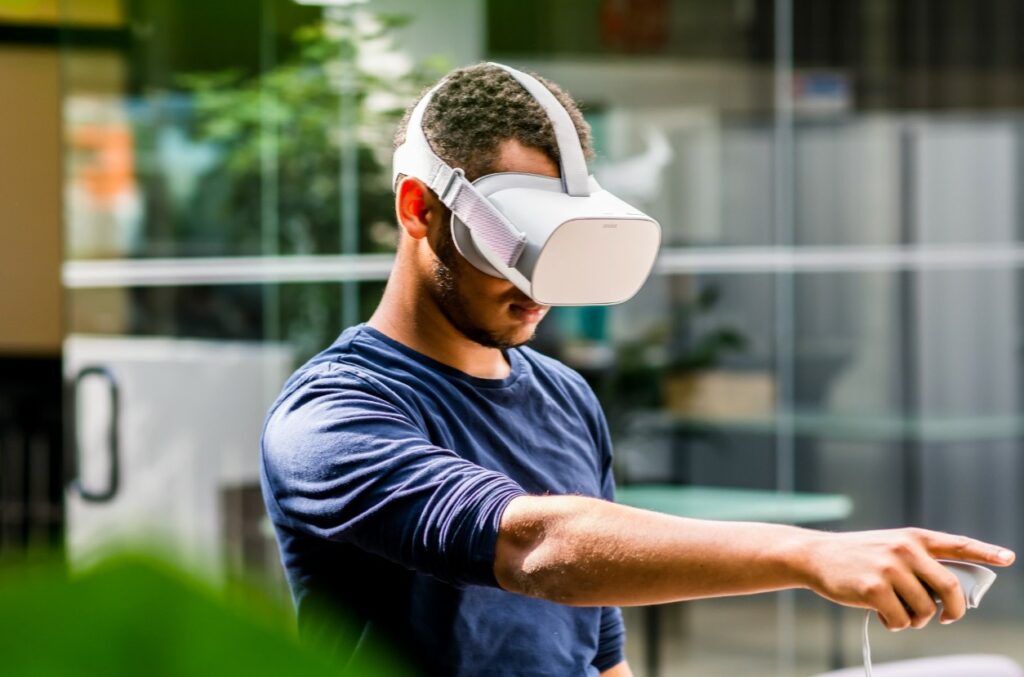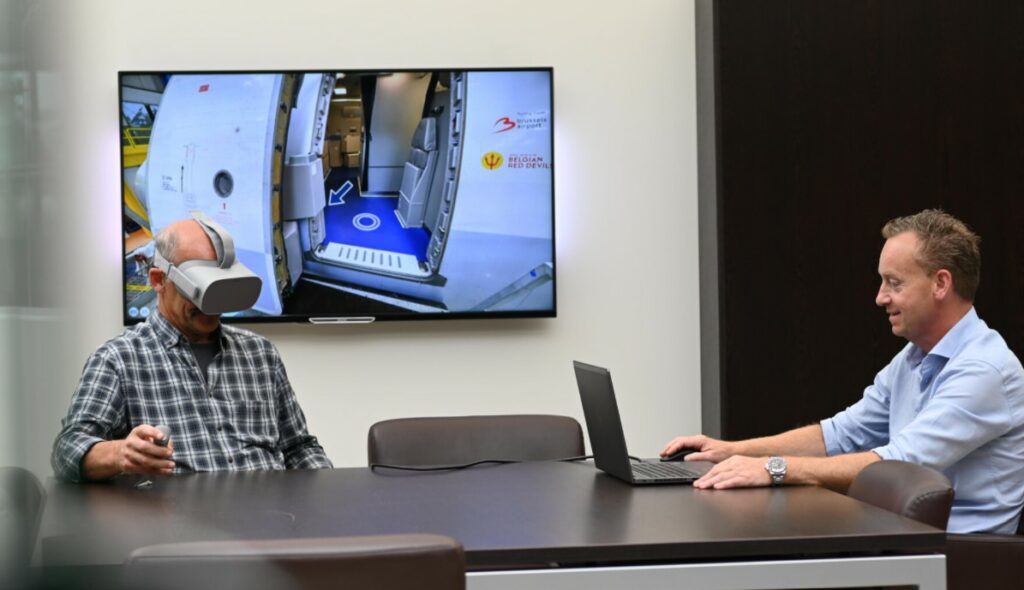For some years now, virtual reality or VR has been on the rise in facility management. The time that virtual reality was mainly linked to gamers lies behind us. But what possibilities does virtual reality offer in the context of facility management?
What is virtual reality?
VR or virtual reality is a technique that makes it seem as if you are in a completely different reality. This virtual environment can resemble the world as we know it, but it can also be an entirely fictitious environment. In facility services, realistic VR environments are mainly used.
In addition to virtual reality, there is also augmented reality (AR) and mixed reality (MR). With AR, computer-generated elements are added to reality. In contrast to VR, with AR you do perceive real reality. It is therefore an extension of reality, hence the name ‘augmented reality‘.
Mixed reality (MR) is the fusion of the real and virtual reality where interaction between the real and the virtual world is possible.

Applications of virtual reality in facility management
Facility service providers use virtual reality for onboarding and especially for training employees.
In the onboarding process, VR gives new employees the chance to get to know their employer, their colleagues, their work environment, their tasks and so on by digital means.
In facility management, VR is particularly popular for training. Blended learning, a mix of practical lessons and training via e-learning, VR, etc., is completely established in the facilities sector.
For practical or safety reasons, it is often impossible to organise training-on-the-job for technicians, security guards, cleaners, etc. Here, VR offers a very useful alternative. VR makes it possible to create detailed, three-dimensional environments: a building, the inside of a machine, an aircraft, etc. VR allows trainees to look around 360° in their future work environment. By using interactive info-points, they can consult additional information.
How Mobility Masters uses virtual reality
Mobility Masters uses VR technology to train employees who will be cleaning aircrafts. It is practically impossible to train the employees in a real aircraft. Therefore, with the aid of VR glasses they learn, for example, how to open and close an aircraft door, how to carry out a safety check of the aircraft interior, and so on.

Benefits of virtual reality in facility management
The use of virtual reality in facility management offers numerous advantages:
- Safety: since it is a virtual environment, everything happens in absolute safety. No damage can be done to machines or infrastructure.
- Easy to use: VR applications are very user-friendly, operation is easy and intuitive.
- Increased motivation: trainees experience VR training as ‘fun’, ‘innovative’ and ‘a unique experience’. Moreover, employees no longer have to travel for training. Additional advantage: the course is always available and can therefore be followed at any time. And if something is not clear, the student can simply review that part again. All these factors provide extra motivation, which is often lacking in a traditional, theoretical classroom lesson.
- Proactivity: innovating and planning becomes easier. You can test everything in advance in the virtual world. Because you do not have to test heavy or delicate equipment in real life, it is usually also cost-effective.
- Higher efficiency and quality: the customer also benefits from the use of VR. When they start working in a company, the employees of the facility services provider have already gained experience in the virtual working environment. So they are already familiar with it. This ensures better efficiency and quality.
Future of VR
The application of VR in facility management is in full development. We therefore expect that the importance of VR, AR and MR will only increase in the future.
